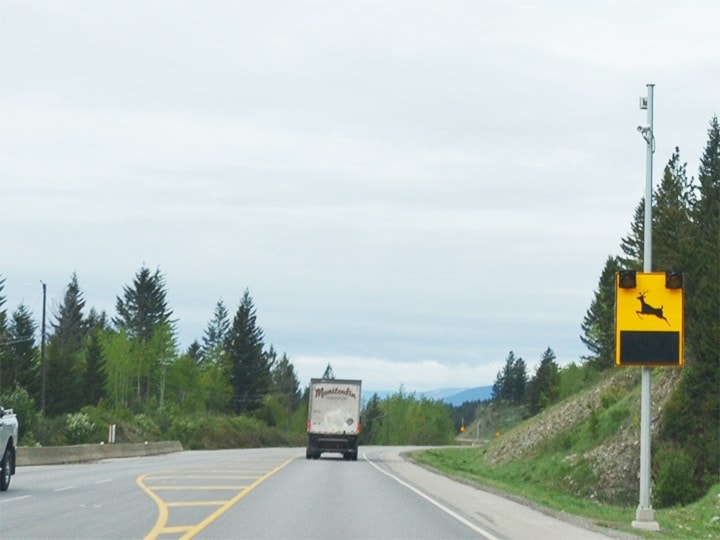Two new made-in-British Columbia high-tech wildlife detection systems aimed to help motorists avoid wildlife are now operational on Highway 3 near Elko and Sparwood.
“About one in 25 crashes are caused by wildlife collisions often leading to fatal injuries of these animals and causing serious injuries to those in the vehicle as well as contributing to increased injury and collision claims," said Minister of Transportation and Infrastructure Todd Stone. "Our government should always be looking at and implementing cutting-edge technology to keep costs low and make B.C. highways safer for both people and wildlife."
Starting last week, drivers along Highway 3 will see flashing warning signs when a large animal approaches the roadway, allowing the driver to slow down and avoid a collision. The components of the systems were largely designed and manufactured in B.C., including the software which was developed in Victoria.
The systems are located approximately one kilometre east of Elko and approximately two kilometres east of Sparwood. These locations were selected for the pilot systems because of the high concentration of elk and deer in the area.
"Highway 3 is a busy highway, used by mining workers, tourists, commercial vehicles and locals," Kootenay East MLA Bill Bennett said. "It is also home to large populations of elk and deer that sometimes migrate onto the highway. We'll be looking very carefully at the results of this pilot project to see if we can implement this technology in other areas around the province."
Ministry staff have been piloting this project since late 2015 and will continue to monitor the data from these sites to see if there is a decrease in wildlife-related crashes as a result of the new detection systems. This data will be examined to see if this is a viable solution for other parts of the province.
B.C. already has a number of measures in place to reduce wildlife-vehicle collisions. These include wildlife exclusion systems with more than 500 km of fencing, overpasses and underpasses, roadside mowing and clearing and static and flashing advisory signs.
